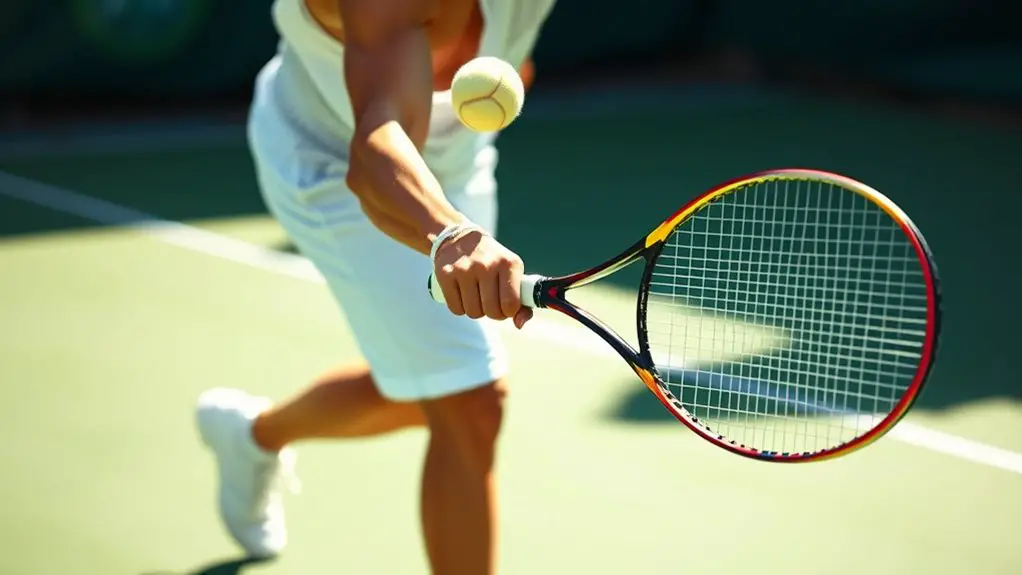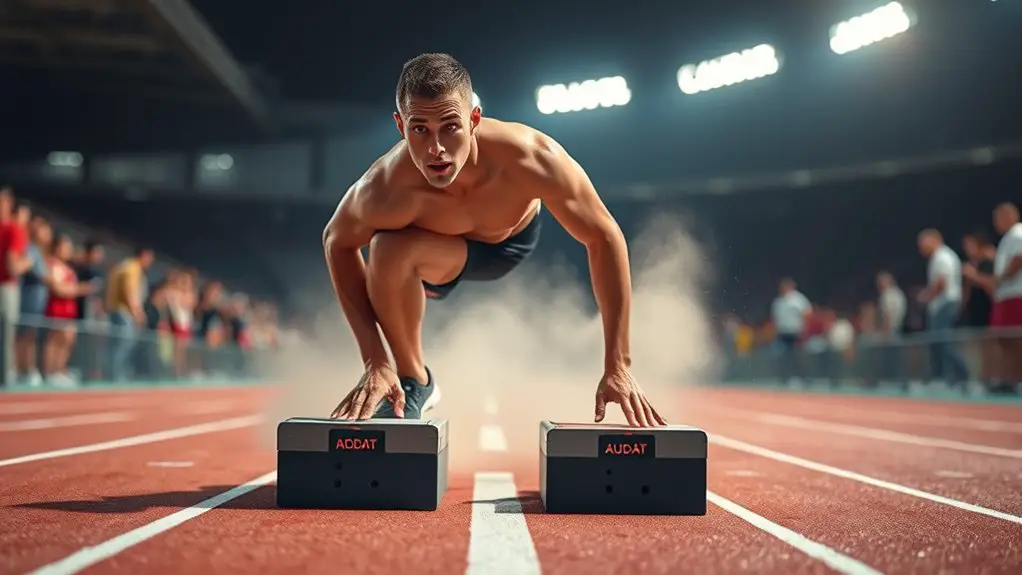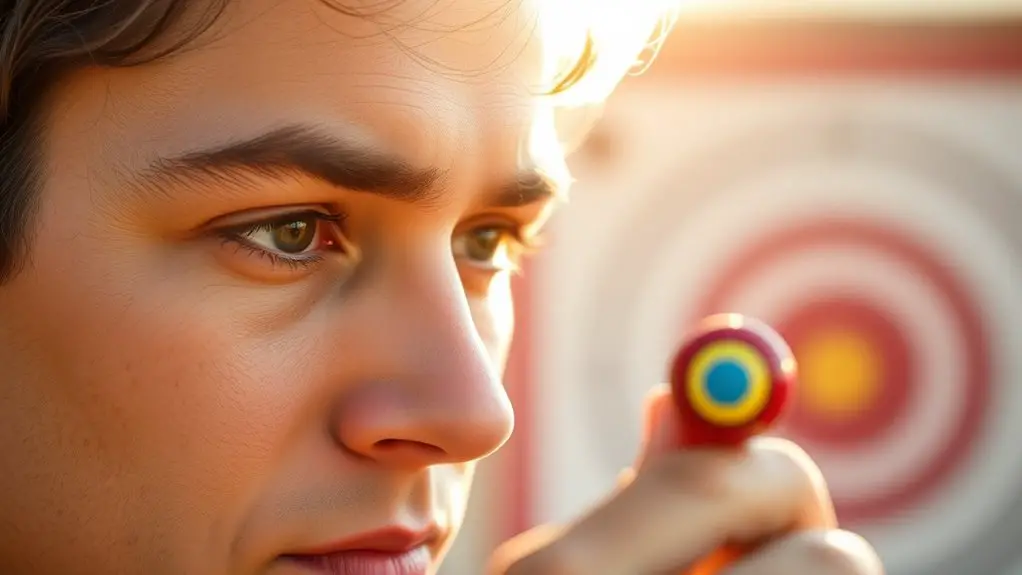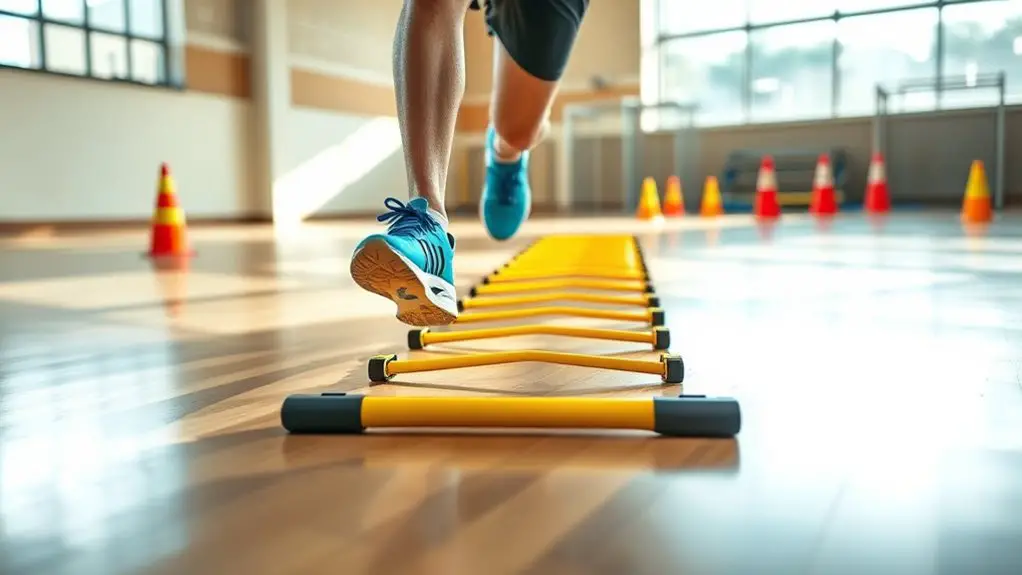The biomechanics of a perfect tennis serve rely on a coordinated blend of body mechanics, grip, toss, and follow-through. You need to engage your entire body, generating force through your legs, hips, and torso for maximum power. Your grip affects control, while a consistent toss establishes rhythm. As you make contact and follow through, focus on alignment and deceleration to prevent injuries and maintain momentum. There's much more to explore about each phase and its impact on your serve's effectiveness.
The Importance of the Serve in Tennis
When you step onto a tennis court, the serve often sets the tone for the entire match. It's your first chance to assert your dominance and dictate the flow of play. Mastering serve strategies can give you a significant advantage, allowing you to keep your opponent guessing. By incorporating serve variations, such as slice, topspin, or flat serves, you'll create opportunities to exploit weaknesses in your rival's return game. Each serve's placement and speed can disrupt their rhythm and force errors, giving you the freedom to control the point from the very beginning. The mental aspect is essential too; a strong serve boosts your confidence, making you feel more liberated on the court. Remember, it's not just about power; it's about finesse and unpredictability. Agility training can further enhance your serve by improving your footwork and positioning, making it easier to execute those variations. Embrace the serve as your weapon, and watch how it transforms your game.
Key Biomechanical Principles
Understanding the key biomechanical principles of a perfect tennis serve can greatly enhance your performance on the court. At the core of an effective serve is force generation. You need to engage your entire body, from your legs to your core, to create a powerful upward motion. By bending your knees and using your hips, you can generate maximum force, allowing you to launch the ball with impressive speed.
Energy transfer is equally vital. As you swing your racket, it's important to seamlessly transfer the energy built from your legs through your torso and into your arm. This fluid motion not only optimizes the power behind your serve but also promotes accuracy. Focus on maintaining balance and stability throughout your movement, ensuring that all that generated force and energy is directed toward the ball. By incorporating strength training exercises, you'll release your full potential and enjoy the freedom of a strong and effective serve.
The Grip: Foundation of the Serve
The grip on your racket serves as the foundation of your tennis serve, influencing both power and control. Choosing the right grip type—like the Eastern, Western, or Continental—can dramatically affect how you deliver your serve. Each grip has its unique advantages, so find one that feels liberating and natural for you.
Grip pressure is equally important; too tight, and you'll lose fluidity, too loose, and you risk losing control. You want a balance that lets you feel the racket without being constricted. As you practice, experiment with different grip types and pressures to discover what gives you the confidence to release your serve with precision.
Ultimately, your grip should empower you, enabling you to express your style and release your full potential on the court. Embrace this foundation, and you'll be well on your way to mastering the perfect serve.
The Toss: Timing and Placement
A solid grip sets the stage, but the toss is where your serve truly begins to take shape. Getting your toss height just right is vital; too high or too low, and you'll lose that fluidity. Aim for a consistent toss rhythm that lets you stay relaxed and in control. Picture the ball floating up, inviting your racket to meet it at the perfect moment.
As you practice, focus on keeping your arm extended and your eyes locked on the ball. This connection will help you gauge the ideal toss height, allowing you to release your power with precision. Remember, a well-timed toss not only sets up your serve but also builds your confidence on the court. When you embrace this freedom in your toss, you'll notice how it transforms your entire serve, bringing you closer to that perfect ace. Additionally, incorporating full-body workouts can enhance your overall strength and coordination, further improving your serve's effectiveness.
The Wind-Up: Building Momentum
As you prepare to serve, the wind-up plays an essential role in generating momentum and power. Mastering your wind-up mechanics is key to effective energy transfer, allowing you to release your full potential on the court. Enhanced range of motion through mobility training can further improve your wind-up efficiency, contributing to a more powerful serve.
| Phase | Key Action | Purpose |
|---|---|---|
| Start | Position your feet | Ground stability |
| Coil | Rotate your shoulders | Store elastic energy |
| Swing | Accelerate your arm | Initiate forward motion |
| Release | Release the energy | Maximize serve impact |
The Contact Point: Maximizing Power and Spin
When you reach the contact point in your serve, the right racket angle is essential for generating power and spin. Your body positioning plays a significant role in maximizing your effectiveness, ensuring you're balanced and ready to release your shot. Timing and coordination come together here, allowing you to harness your momentum for the best possible impact.
Optimal Racket Angle
To maximize power and spin in your tennis serve, understanding the ideal racket angle at the contact point is essential. Finding that best angle can truly set you free on the court, allowing your racket speed to soar.
| Racket Angle | Power Generated | Spin Created |
|---|---|---|
| 10° | Moderate | Low |
| 30° | High | Moderate |
| 45° | Maximum | High |
When you hit the ball with the right angle, you're not just striking; you're releasing your potential. The perfect racket angle helps you channel your energy, creating that blend of power and spin that leaves your opponents in awe. Embrace this freedom, and elevate your game!
Body Positioning Importance
Achieving the perfect racket angle is only part of the equation; your body positioning plays a significant role in maximizing power and spin during the contact point of your serve. Your body alignment should be dynamic yet stable, allowing you to generate force while maintaining balance. As you prepare to strike, verify your feet are shoulder-width apart, creating a solid base. This stability helps you transfer energy efficiently from your legs through your core and into your racket. Keep your shoulders relaxed and your head steady to enhance focus. When you're in the right position, you'll feel free and powerful, enabling you to release both spin and speed. Perfecting this balance is key to elevating your serve.
Timing and Coordination
As you prepare to make contact with the ball, timing and coordination become essential in maximizing both power and spin. Mastering these elements can elevate your serve from ordinary to extraordinary. Here's how you can enhance your skills:
- Timing Drills: Practice your swing with a focus on hitting the ball at its peak for best power.
- Coordination Exercises: Engage in drills that improve your hand-eye coordination, ensuring you connect with the ball cleanly.
- Rhythm and Flow: Develop a consistent rhythm in your serve, allowing for a natural, fluid motion.
Follow-Through: Ensuring Efficiency and Injury Prevention
While the serve often garners attention for its power and precision, the follow-through is equally significant for ensuring efficiency and preventing injuries. You might think of the follow-through as just a formality, but it's your body's way of absorbing the force generated during the serve. By employing effective follow-through techniques, you allow for a natural deceleration, reducing strain on your joints and muscles.
Make sure to extend your racket through the ball's trajectory, allowing your arm to relax afterward. This fluid motion not only optimizes your serve's effectiveness but is also a key component of injury prevention strategies. A proper follow-through keeps your body aligned, minimizing the risk of overuse injuries. Additionally, maintaining a strong lower back is crucial for supporting proper posture, which can enhance your overall performance on the court. So, next time you hit the court, don't rush through this essential phase; embrace it as a critical part of your serve, ensuring you play freely and safely for years to come.
Frequently Asked Questions
How Can I Improve My Serve Consistency?
To improve your serve consistency, focus on developing a steady serve rhythm. Just like a dance, your body needs to move fluidly. Start by practicing your toss and swing together, so they feel natural. Don't forget grip adjustment; experimenting with how you hold the racket can make a huge difference. Find what feels comfortable for you, and soon enough, you'll notice improved accuracy and power, giving you the freedom to play your best game.
What Common Mistakes Should I Avoid During My Serve?
When you're serving, it's essential to avoid common mistakes that can throw off your game. One big issue is an inconsistent ball toss; make sure it's high enough and in front of you. Also, check your grip technique—if it's too tight or loose, you won't have the control you need. By focusing on these elements, you'll release greater freedom in your serve and enjoy the game even more!
How Does Body Type Influence Serving Technique?
You might think that body type doesn't play a huge role in serving technique, but it really does. If you've got a height advantage, you can generate more power and angle on your serve. Muscle distribution also matters—strong legs can help with your push-off, while upper body strength aids in your swing. Embracing your unique physique can enhance your game, so don't shy away from using what you've got to your advantage!
What Role Does Mental Focus Play in Serving?
Mental focus is essential when you're serving. It's not just about physical technique; your mind plays a huge role. By using mental visualization, you can picture the perfect serve, which helps boost your confidence. Concentration techniques, like deep breathing or repeating a mantra, can keep distractions at bay. When you're mentally in the zone, you'll feel more free and connected to your game, leading to better performance on the court.
How Often Should I Practice My Serve?
If you think practicing your serve just once a week is enough, you might as well be swinging a spaghetti noodle! To truly master it, aim for frequency guidelines of at least three to four times a week. Mix up your practice methods—drills, match simulations, and even some solo shadow swings. Embrace the freedom of creativity in your training, and you'll be serving like a pro before you know it!




